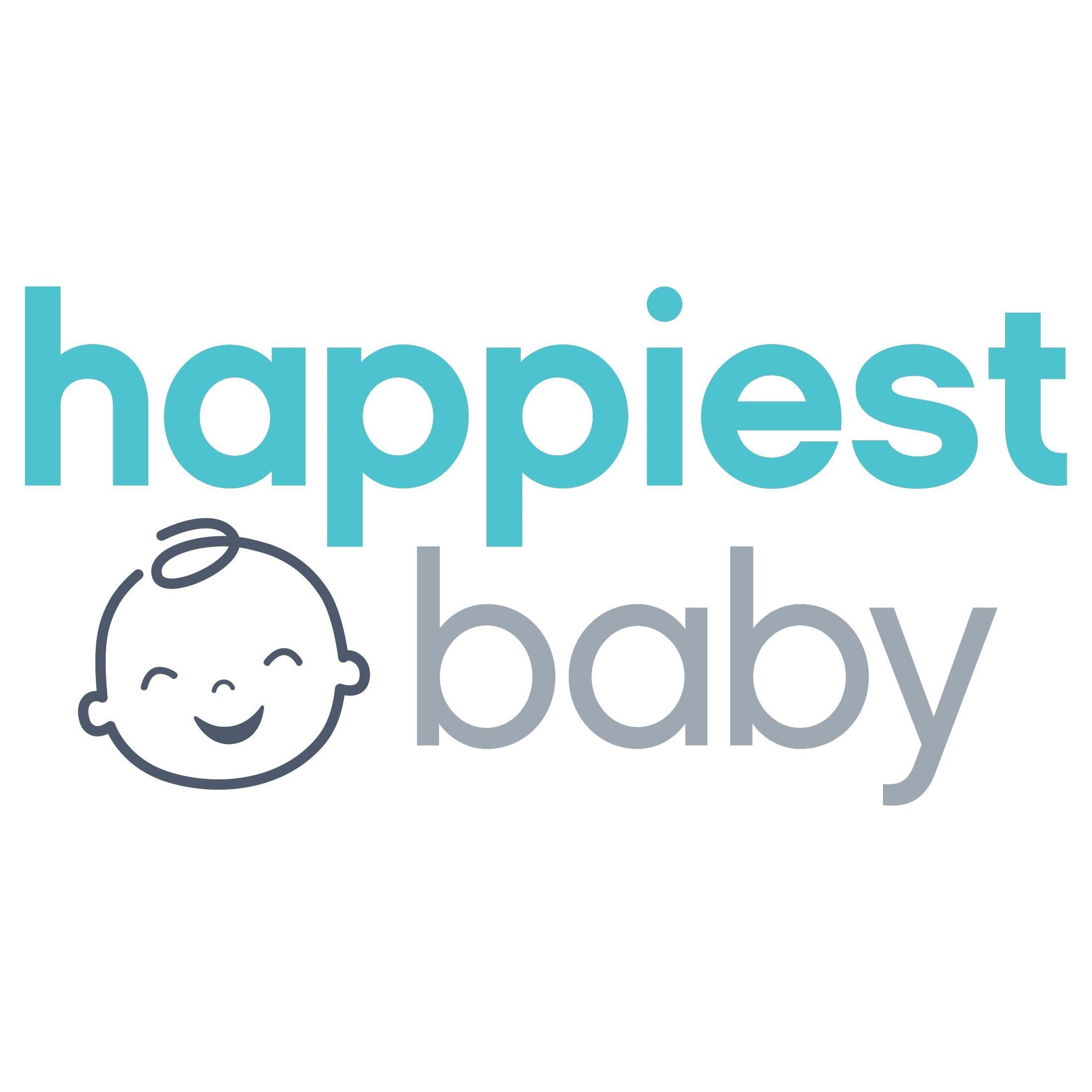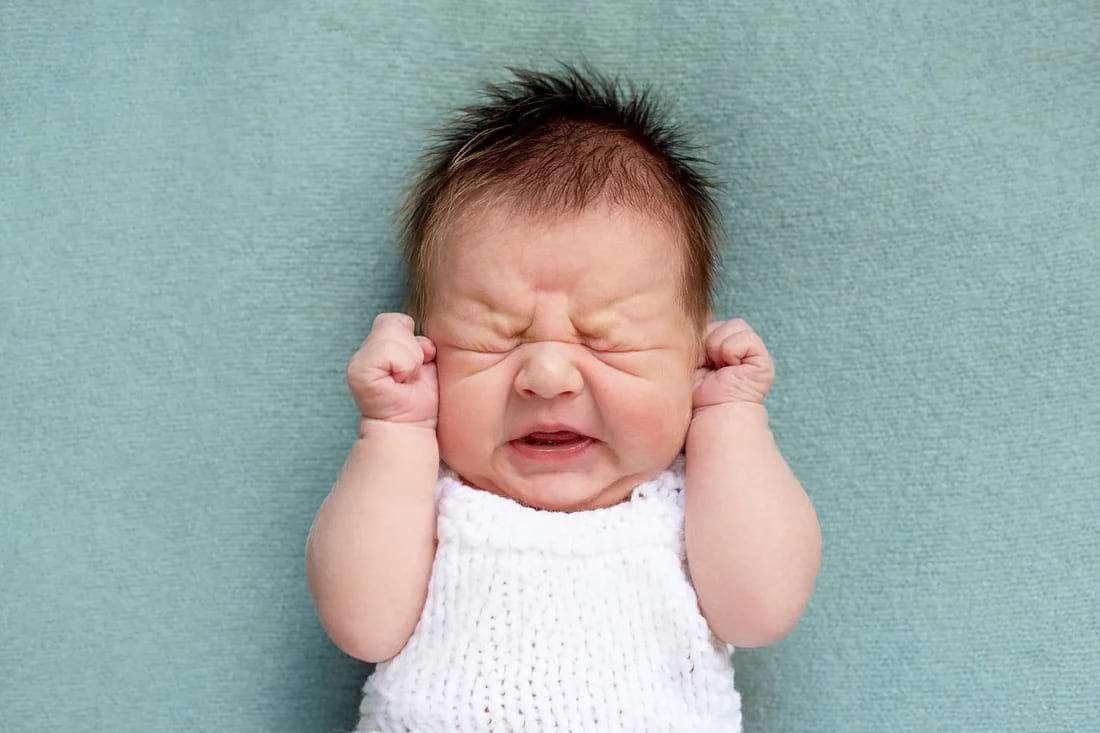BABY
Why Do Babies Cry in Their Sleep?
How to figure out what your baby’s cries mean and when you should intervene.

Written by
Happiest Baby Staff

SHARE THIS ARTICLE
PARENT PICKS
Bestsellers
BABY

Written by
Happiest Baby Staff

SHARE THIS ARTICLE
Bestsellers
We’re all pretty familiar with the phenomenon of talking in your sleep and even walking in your sleep…but crying in your sleep? For babies, crying while sleeping is a normal and expected behavior! But questions remain: Why do babies cry in their sleep? What do you do if your baby cries in their sleep? And is Baby crying in their sleep something to worry about? Here, all the answers you’re looking for!
Suddenly hearing your sweet sleeping baby cry out from their bassinet is jarring and sometimes worrisome. There are several common reasons that your baby might cry during sleep.
Newborn babies spend about half their sleeping hours in rapid eye movement (REM) sleep. REM sleep is also dubbed “active sleep”—and for good reason! During REM, babies twitch and jerk, their tiny mouths move, their closed eyes flutter…and they can whimper and cry, too. And because newborns cycle back to active sleep about every 45 to 50 minutes, crying in their sleep can occur throughout their ZZZs. All of this is 100% normal and nothing to worry about!
Babies have tiny tummies, and they grow rapidly, so they get hungry a lot...including throughout the night. Breastfed newborns wake to feed about every 2 to 3 hours and formula-fed babies do so roughly every 3 to 4 hours. And since crying is your little one’s only form of communication, that’s how they let you know they need a bite to eat. (Unsure if feeding is the answer? Here, signs your baby is hungry.)
Babies love to suck! That’s why sucking is part of the game-changing 5 S’s for soothing babies. However, if your baby snoozes with a dummy and the dummy falls out, tears are a likely side effect.
Your baby’s nervous system is a work in progress, which means their innate reflexes are in full effect...and can disrupt sleep. For example, your little one’s startle reflex (aka the moro reflex) can cause wild hand motions that can easily bonk themselves in the face, causing tears.
Dirty or wet diapers, a too-hot or too-cold sleep environment, teething pain, wayward light streaming through the window or door cracks, or a doggie barking in the distance can all disturb a snoozing baby, bringing on middle-of-the-night crying.
While you’d think an overtired baby would be able to sleep anywhere and do so soundly, that’s often not the case! When babies are wired and tired, they not only struggle to settle down, they struggle to remain asleep, too. That’s because being overtired causes cortisol—a fatigue-fighting hormone—to run rampant in your little one, disturbing sleep.
Just as adults use a variety tones to express different emotions, babies use a range of cries to convey different needs. Here’s a little help to distinguish your baby’s cries when they’re sleeping:
Don’t worry, your little one is not crying in their sleep because they’re having a nightmare! In fact, infants and babies don’t even experience dreams until they’re around 2 years old. And even then, toddler dreams aren’t really like grownup dreams. Instead, toddler dreams are like snapshots or a slideshow, featuring friendly animals and other familiar sights, like images of their family eating dinner. Nightmares or night terrors most often occur in school age kids, but children as young as 4 years old may experience them, too. And, while rare, babies as young as 18 months old have been known to have night terrors as well. (Learn more about toddler nightmares.)
Different sleepytime tears call for different soothing methods. In fact, it’s often best to ignore some middle-of-the-night baby cries. (Waking a crying baby might even upset them more!) Follow this rule-of-thumb when your baby cries at night:
You can’t do anything about a baby’s natural sleep cycles and their somewhat predictable squeaks and whimpers that arise when they’re shifting from one sleep stage to the next. But there are things you can do to help keep your baby’s mid-sleep crying to a minimum, like…
Yes, babies cry in their sleep when in SNOO, too! The difference? SNOO is designed to automatically respond to your baby’s cries with a steady progression of white noise and soothing rocking to gently settle them back into dreamland. In fact, SNOO often calms fussing within 60 seconds! But if your baby’s crying continues for 2 to 3 minutes, SNOO automatically shuts off and sends an alert via our app that your little one needs your attention. Of course, you don’t need to wait for SNOO to level up or “time out” before you go to your baby, but it is recommended that you wait until SNOO increases to level 2 (green) or 3 (yellow) before intervening. With that, it does take some time to adjust to sleeping in SNOO. Here’s what to expect:
Disclaimer: The information on our site is NOT medical advice for any specific person or condition. It is only meant as general information. If you have any medical questions and concerns about your child or yourself, please contact your health provider. Breastmilk is the best source of nutrition for babies. It is important that, in preparation for and during breastfeeding, mothers eat a healthy, balanced diet. Combined breast- and bottle-feeding in the first weeks of life may reduce the supply of a mother's breastmilk and reversing the decision not to breastfeed is difficult. If you do decide to use infant formula, you should follow instructions carefully.